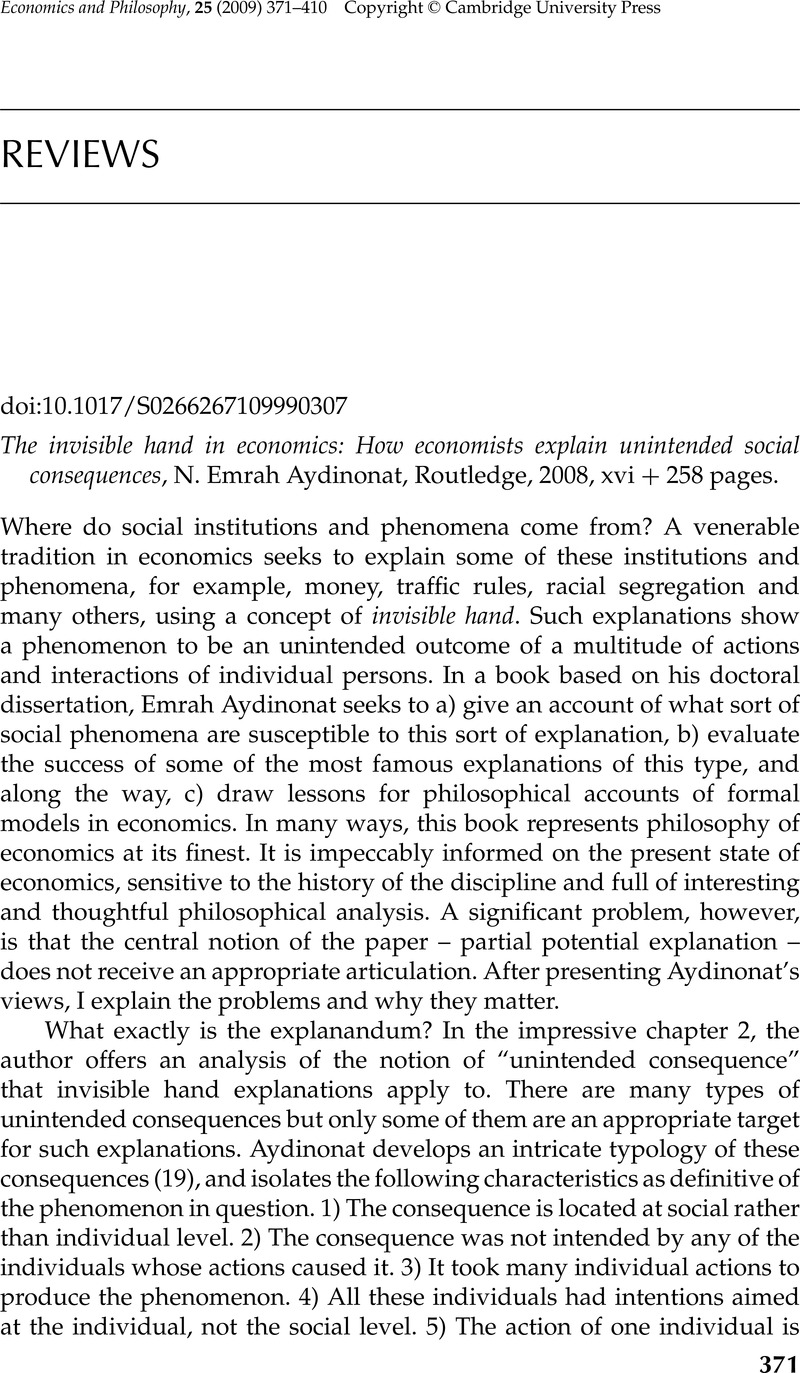No CrossRef data available.
Article contents
The invisible hand in economics: How economists explain unintended social consequences, N. Emrah Aydinonat, Routledge, 2008, xvi + 258 pages.
Published online by Cambridge University Press: 10 November 2009
Abstract
An abstract is not available for this content so a preview has been provided. Please use the Get access link above for information on how to access this content.

- Type
- Reviews
- Information
- Economics & Philosophy , Volume 25 , Issue 3: Economics and Philosophy on Ambiguity Aversion , November 2009 , pp. 371 - 378
- Copyright
- Copyright © Cambridge University Press 2009
References
REFERENCES
Cartwright, N. 1989. Nature's capacities and their measurement. Oxford: Oxford University Press.Google Scholar
Cartwright, N. 1998. Capacities. In The Handbook of Economic Methodology, ed. Davis, J. B., Hands, D. W., and Mäki, U., 45–8. London: Edward Elgar.Google Scholar
Cartwright, N. 2009. If no capacities, then no credible worlds: but can models reveal capacities? Erkenntnis 70: 45–58.CrossRefGoogle Scholar
Hausman, D. 1992. The inexact and separate science of economics. Cambridge: Cambridge University Press.CrossRefGoogle Scholar
Maki, U. 1992. On the method of isolation in economics. Poznan Studies in the Philosophy of the Sciences and the Humanities 26: 319–54.Google Scholar
Sugden, R. 2000. Credible worlds: the status of theoretical models in economics. Journal of Economic Methodology 7: 1–31.CrossRefGoogle Scholar
Sugden, R. 2009. Credible worlds, capacities and mechanisms. Erkenntnis 70: 3–27.CrossRefGoogle Scholar




